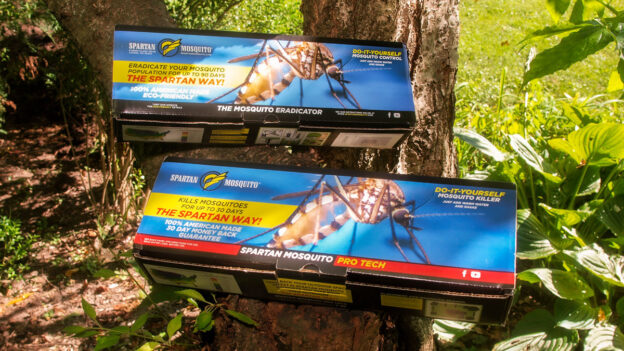Below are some documents that detail regulatory actions against Spartan Mosquito (AC2T, Inc.), a Mississippi company that markets tubes filled with sugar, yeast, water, and either table salt or boric acid. Most are letters denying or revoking registrations to the Spartan Mosquito Eradicator, one is a Notice of Warning from the Environmental Protection Agency (EPA), one is a fine for selling illegally (in California), and one is a denial of registration for the Spartan Mosquito Pro Tech (also by California). I am still trying to obtain denial letters from Connecticut, Idaho, Kansas, Maine, Oklahoma, Pennsylvania, Puerto Rico, and the District of Columbia. In addition, there could be other states that have denied registrations but have not disclosed that fact to the public.
I am posting these documents on my website so that state and federal regulators can see what concerns different agencies have had with the company’s pesticide products. This is needed because there is no formal procedure by which one state informs all other states that a pesticide product is violating the Federal Insecticide, Fungicide, and Rodenticide Act (FIFRA), a problem especially important for pesticides that manufacturers claim are exempt from EPA regulation but are not. Similarly, when the EPA warns a company that it is not in compliance with FIFRA, that notice is apparently not forwarded to states that might be selling the flagged product.
Nebraska — January 8, 2018
New Mexico — Mar 13, 2018
Environmental Protection Agency — Aug 6, 2018
Indiana — Aug 13, 2019
Montana — Nov 19, 2019
Washington — Feb 11, 2020
Utah — Dec 2, 2019
Kansas — Sept 17, 2020
New York — May 5, 2021
California — June 21, 2021
This PDF documents a fine for selling the pesticide without a registration.
California — Jan 18, 2022
This PDF is a denial for the Spartan Mosquito Pro Tech.
South Carolina — Aug 9, 2022
Virginia — Sept 20, 2022
For more information, please see my other posts about Spartan Mosquito.

